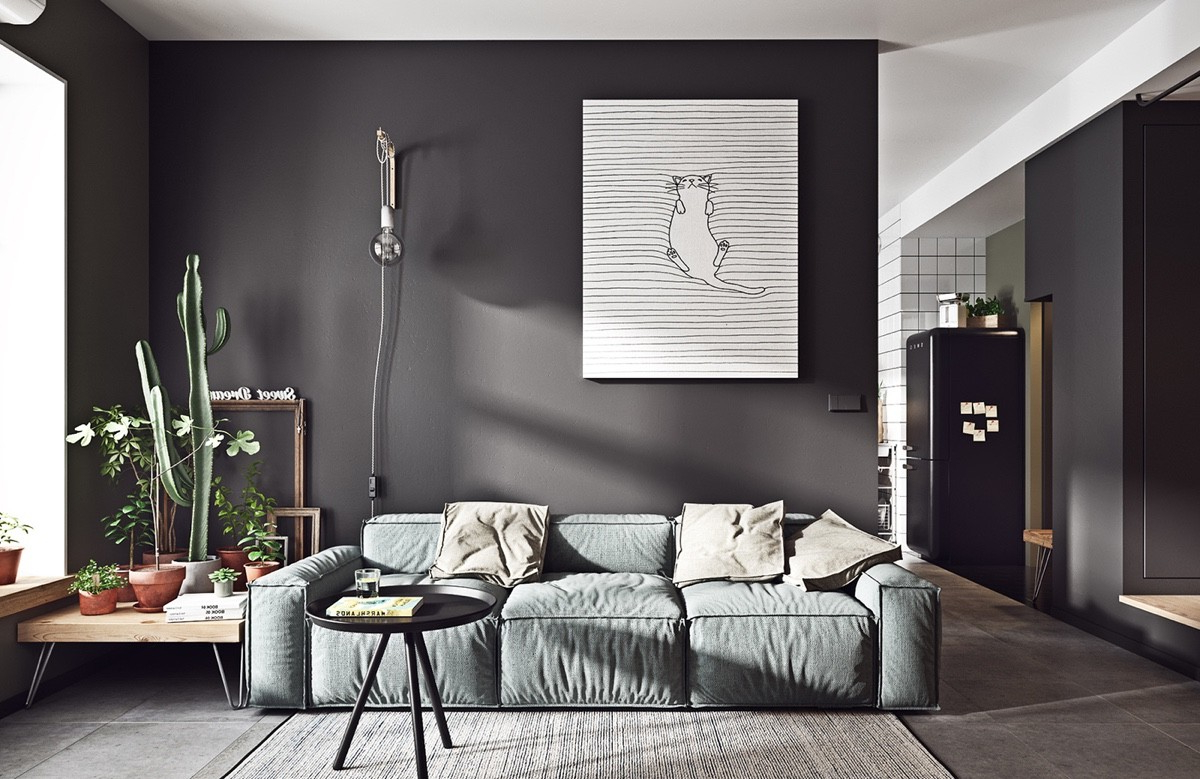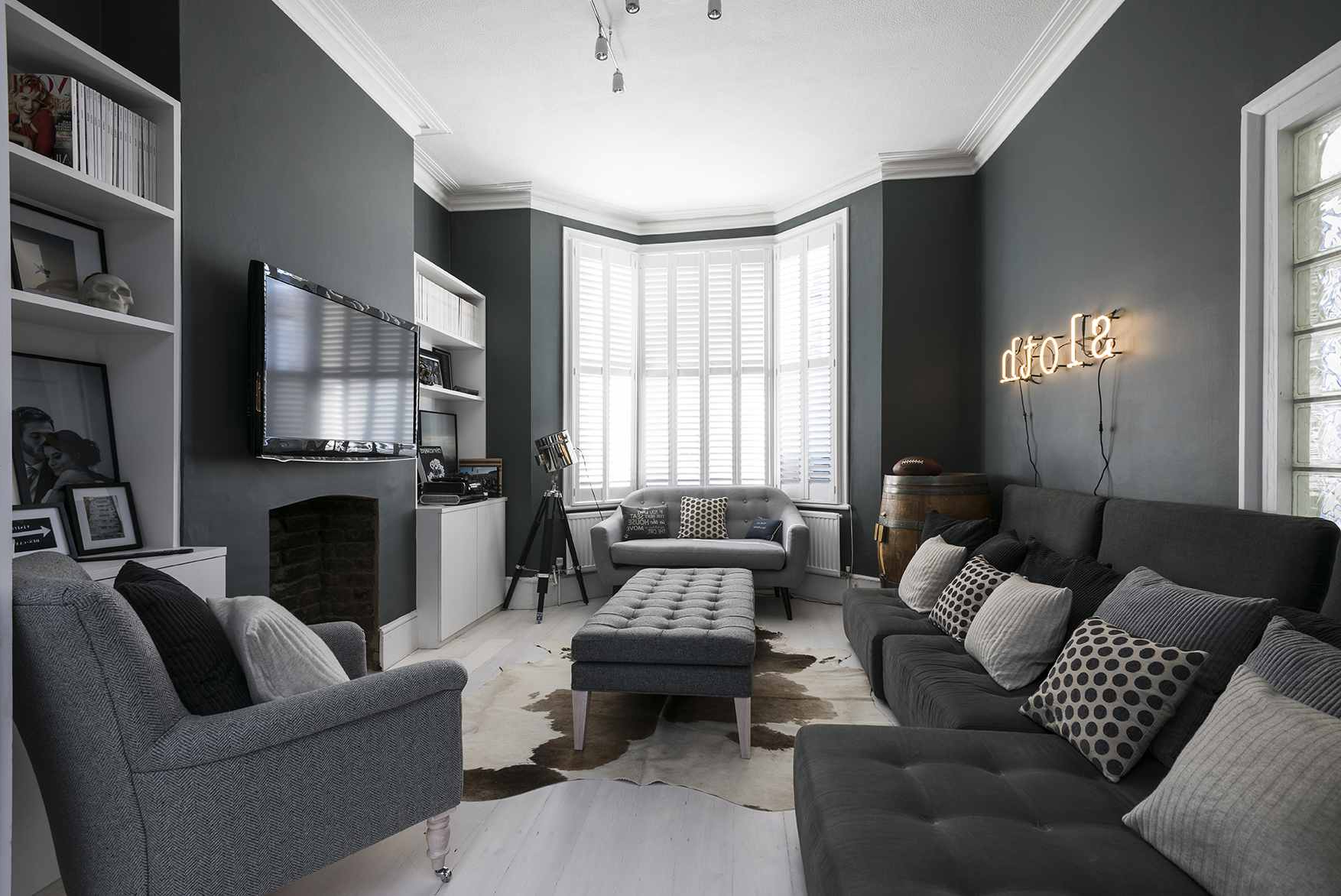Picture this: a cozy living room where deep, rich grays meet warm, natural wood tones in perfect harmony. It’s not just a dream—it’s achievable. The secret lies in understanding how these two elements can work together to create something truly special. When done right, dark gray and natural wood can transform your space into a haven of comfort and style.
In today’s design landscape, the combination of dark gray and natural wood has emerged as one of the most sought-after color pairings. This powerful duo brings together the sophistication of modern aesthetics with the warmth and authenticity of natural materials. Whether you’re renovating your entire living space or simply updating your seating arrangement, mastering this pairing can elevate your home’s appeal. The beauty of this combination isn’t just in its visual impact—it’s about creating a sense of balance and harmony that makes people want to stay and linger.
Understanding the Foundation: Why These Colors Work Together
There’s something undeniably magnetic about the pairing of dark gray and natural wood—a blend that effortlessly balances modern sophistication with timeless warmth. When used thoughtfully, this duo can transform any interior into a space that feels both grounded and inviting. Dark gray brings a sense of calm and control, while natural wood adds life and authenticity. Together, they tell a story of contrast and harmony, of cool refinement meeting organic comfort.
In design, dark gray often plays the role of a stabilizing force. It has the strength of black without the harshness and can make any room feel elegant and composed. Whether on walls, upholstery, or cabinetry, it acts as a canvas that allows other elements to shine. Its neutrality makes it flexible—it can shift from industrial to rustic, from minimalist to cozy, depending on how it’s paired. When layered with natural wood tones, it gains warmth and texture, creating visual balance.
Natural wood, on the other hand, brings in character and depth that paint or metal can’t replicate. Every grain pattern and variation in tone adds a sense of individuality. Light oak offers brightness and an airy Scandinavian vibe, while walnut or teak delivers richness and formality. These organic textures remind us of nature’s imperfections and beauty, grounding the modern precision of dark gray in something more human and comforting.
The success of this pairing lies in contrast and proportion. Too much gray can make a space feel cold or heavy; too much wood can overwhelm with warmth. The secret is layering them in a way that allows each to play off the other’s strengths. For example, a dark gray accent wall behind a natural wood headboard immediately draws the eye, emphasizing both materials. Or consider a living room with deep gray sofas paired with a rustic oak coffee table—the result feels curated yet relaxed.
Lighting plays an essential role, too. Under warm lighting, wood takes on a golden glow that softens gray tones, creating a cozy atmosphere perfect for living rooms and bedrooms. In brighter, cooler light, the combination feels modern and crisp, ideal for offices or kitchens. This adaptability is one reason why designers return to this pairing again and again—it’s endlessly versatile and never feels dated.
To enhance the look further, introduce textures and complementary accents. Linen cushions, woven rugs, and matte metal fixtures can tie the palette together while adding tactile richness. Plants also make a perfect finishing touch—their greenery provides a fresh counterpoint that lifts the gray tones and enhances the organic quality of the wood.
Ultimately, the blend of dark gray and natural wood is more than a color choice—it’s a design philosophy. It’s about balancing the man-made with the natural, the structured with the spontaneous. This pairing embodies the kind of quiet sophistication that never shouts for attention yet always feels effortlessly elegant. In a world where trends come and go, this combination remains timeless—proof that true design harmony lies not in uniformity, but in contrast that complements.
Choosing the Right Shades of Dark Gray
Not all dark grays are created equal, and selecting the right one can make or break your design vision. When choosing a dark gray, consider whether you want a cool-toned or warm-toned version. Cool grays tend to make spaces feel larger and more airy, while warm grays add coziness and intimacy. A charcoal gray might be too harsh for a living room, but a deeper slate gray can provide excellent contrast against lighter wood tones. Consider testing samples on your wall before committing to a full paint job. The lighting in your room will dramatically affect how the gray appears throughout different times of day. A gray that looks stunning in bright daylight might appear too heavy in dimmer conditions. Remember, the goal is to create a palette that feels balanced and inviting.
Selecting Natural Wood Tones That Complement Your Space
Natural wood comes in many varieties, each with its own personality and characteristics. Oak tends to be lighter and more uniform, while walnut offers deeper, richer tones. Cedar and pine bring their own unique grain patterns and textures. The key is matching the wood tone to your overall design aesthetic. If you’ve chosen a cooler dark gray, opt for wood tones that lean toward the light side or have subtle reddish undertones. For warmer grays, consider woods with golden or amber hues. Pay attention to the wood’s grain pattern too—some are more dramatic and bold, others more subtle and refined. You’ll want to ensure the wood’s character doesn’t overwhelm the gray’s sophistication. Sometimes a simple, clean wood finish works better than ornate details.
Strategic Placement: Where to Use Each Element
The placement of dark gray and natural wood elements can significantly impact the overall feel of your living room. Start with larger pieces first—the sofa, coffee table, or area rug. These serve as the foundation for your color scheme. A dark gray sectional can anchor the room, while a wooden coffee table adds warmth and visual interest. Consider layering different wood tones throughout your space. Maybe you use a light wood floor with a darker wood accent wall. Or perhaps a wooden bookshelf with a dark gray bench. The trick is creating variety without chaos. Think about how these elements interact with each other and with the natural light in your room. Don’t forget to incorporate smaller touches like wooden picture frames, gray throw pillows, or a combination of both. These little details help reinforce your chosen palette.
Practical Tips for Successful Implementation
Here are some tried-and-tested approaches for mixing these elements effectively:
• Start with a 60-30-10 rule: 60% dominant color (dark gray), 30% secondary element (wood), 10% accent color
• Test small samples in different lighting conditions throughout the day
• Use varying textures to soften the contrast between hard surfaces
• Incorporate natural fibers like wool or linen to bridge the gap between materials
• Choose wood finishes that complement rather than compete with your gray
• Add plants or greenery to enhance the natural wood connection
• Consider using different wood species for different furniture pieces to create visual variety
Remember that the goal isn’t perfection—it’s harmony. Sometimes the most beautiful combinations happen when you let things feel slightly imperfect but still intentional.
Real-World Examples and Inspiration
Take a look at some successful implementations of this color pairing. One popular approach involves a dark gray velvet sofa paired with a reclaimed wood coffee table. The contrast creates visual interest while maintaining warmth. Another effective strategy uses a dark gray wall with natural wood shelving units. The wood adds texture and softness to what could otherwise be a very stark space. Some designers love incorporating a dark gray area rug with natural wood flooring and wooden accent chairs. This creates a layered effect that feels both cohesive and dynamic. The key is seeing how each element supports the others rather than fighting them. You’ll notice that successful combinations often feature a mix of different wood textures and finishes. Sometimes a smooth, polished wood contrasts beautifully with a rougher, more weathered surface.
The marriage of dark gray and natural wood in modern living rooms represents more than just a design trend—it’s about creating spaces that feel both sophisticated and lived-in. This combination speaks to our desire for environments that are both stylish and comfortable. By carefully considering the shades, placements, and textures involved, you can create a living space that truly reflects your personal style. The journey from concept to reality may involve some experimentation, but the results are worth the effort. Whether you’re starting from scratch or updating existing elements, remember that the best designs often come from understanding how different elements support and enhance each other. The dark gray and natural wood pairing offers endless possibilities for creating a modern space that feels uniquely yours.















